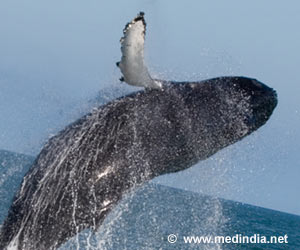Up to 26,545 blue whale songs in the Antarctic were captured by scientists in a study. They used - for the first time - new acoustical detection and tracking techniques to locate and observe them.

Some 18 experts in acoustics and in classification of the whales, as well as engineers and observers, departed in January on a seven-week trip to the Ross Sea with the aim of deploying acoustic devices known as sonobuoys to study the population, distribution and behavior of the whales.
The result was 626 hours of audio registered in real time including 26,545 songs - or vocalizations - produced by the gigantic beasts, according to the project's head acoustician, Brian Miller, with the Australian Antarctic Division.
The blue whale - or Balaenoptera musculus - makes a very deep and resonant call that can be captured underwater hundreds of kilometers away, Miller said in a statement.
The International Whaling Commission has calculated that in 2000 the population of blue whales in the Southern Hemisphere was between 400 and 1,400.
Blue whales are the largest animals on earth, growing up to 31 meters long and weighing 170,000 kg or more.
Advertisement









